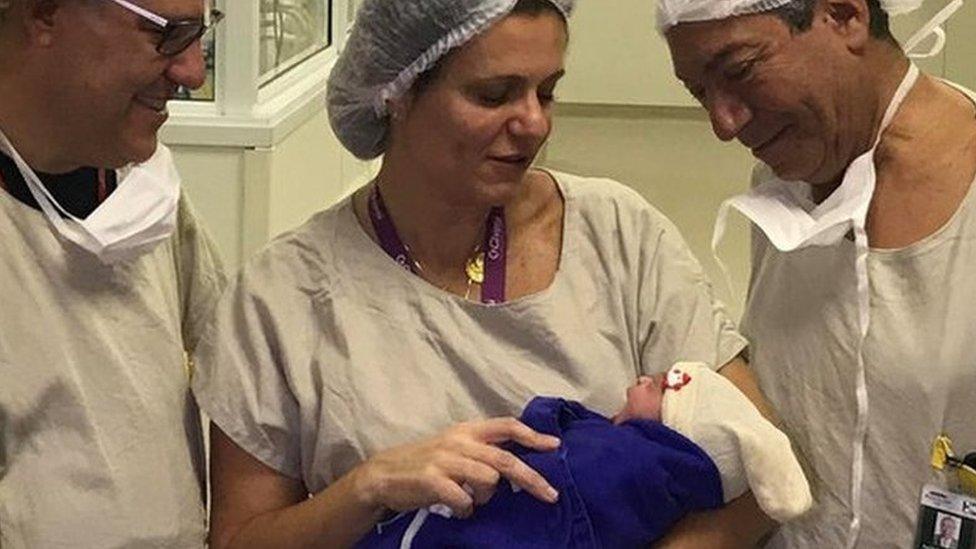First baby born after deceased womb transplant
- Published

The baby was delivered by Caesarean section on 15 December 2017
A healthy baby girl has been born using a womb transplanted from a dead person.
The 10-hour transplant operation - and later fertility treatment - took place in SÃĢo Paulo, Brazil, in 2016. The mother, 32, was born without a womb.
There have been 39 womb transplants using a live donor, including mothers donating their womb to their daughter, resulting in 11 babies.
But the 10 previous transplants from a dead donor have failed or resulted in miscarriage.
Given drugs
In this case, , the womb donor was a mother of three in her mid-40s who died from bleeding on the brain.
The recipient had Mayer-Rokitansky-KÞster-Hauser syndrome, which affects about one in every 4,500 women and results in the vagina and uterus (womb) failing to form properly.
However, her ovaries were fine. And doctors were able to remove eggs, fertilise them with the father-to-be's sperm and freeze them.
The woman was given drugs that weakened her immune system to prevent her body attacking and rejecting the transplant.
The 10-hour transplant operation - and later fertility treatment - took place in SÃĢo Paulo, Brazil, in 2016
'Medical milestone'
And about six weeks later, she started having periods.
After seven months, the fertilised eggs were implanted.
And, after a normal pregnancy, a 6lb (2.5kg) baby was delivered by Caesarean section on 15 December 2017.
"Using deceased donor organs is a viable option", a uterus transplant surgeon tells World at One
Dr Dani Ejzenberg, from Hospital das ClÃnicas in SÃĢo Paulo, said: "The first uterus transplants from live donors were a medical milestone, creating the possibility of childbirth for many infertile women with access to suitable donors and the needed medical facilities.
'Extremely exciting'
"However, the need for a live donor is a major limitation as donors are rare, typically being willing and eligible family members or close friends."
Dr Srdjan Saso, from Imperial College London, said the results were "extremely exciting".
"It enables use of a much wider potential donor population, applies lower costs and avoids live donors' surgical risks."
- Published20 June 2016
- Published30 September 2015